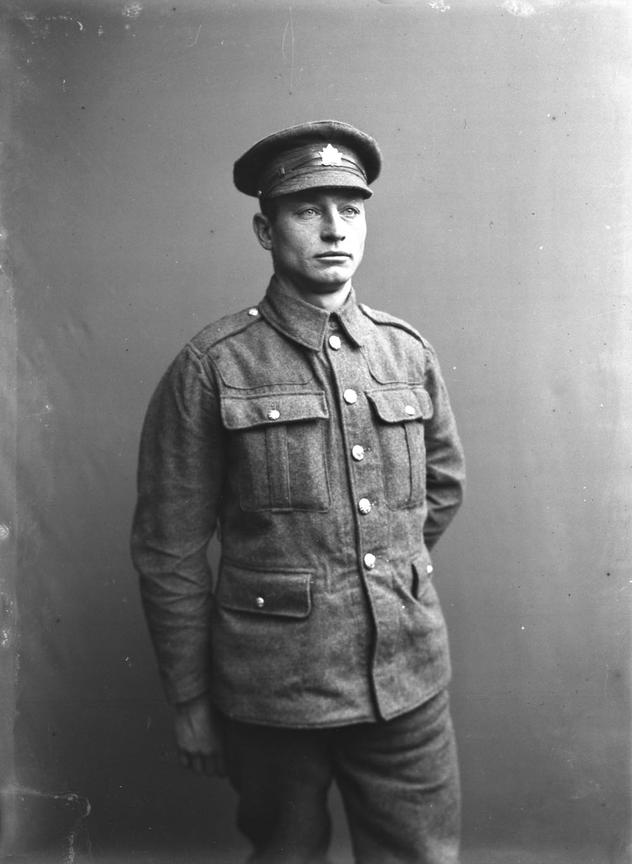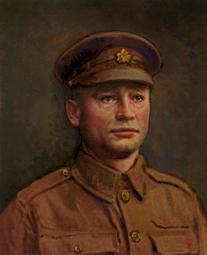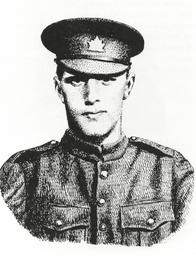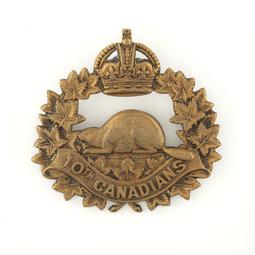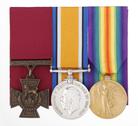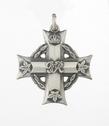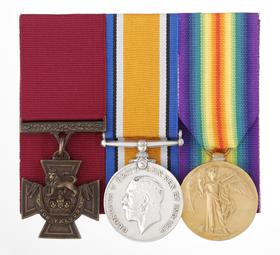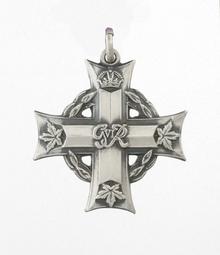Unit
10th Canadian Infantry Battalion (Canadians)
Branch
Infantry
Service Component
Canadian Expeditionary Force
Service Number
226353
birth
1898/05/09
Gananoque, Ontario, Canada
death
1917/08/17
Hill 70, France
grave
Noeux-les-Mines Communal Cemetery, Bethune, France
Gender
Male
John Henry Brown, known as Harry W. Brown, was born 11 May 1898 to Henry and Adelaide Brown in Gananoque, Ontario. His father had been born in Peterborough in 1869 and worked as a brass molder. By 1901 the family consisted of two daughters and one son and was still living there. Harry’s father died within the next decade, as his mother remarried, to Patrick McAuliffe, in 1911 when Harry was 12 or 13. By the time of his attestation Harry was living in London, Ontario listing his occupation as “farmer”.
He attested to the Canadian Expeditionary Force (CEF) 18 August 1916 in London, Ontario and joined the Canadian Mounted Rifles. He went with their 6th draft to the United Kingdom in SS Mauritania arriving 31 October 1916. He trained in the United Kingdom at Shorncliffe with the 11th Canadian Infantry Battalion and suffered a bout of tonsillitis at the end of the year. In May 1917 he was transferred to his fighting unit, the 10th Canadian Infantry Battalion (Canadians) and went to France 27 May 1917. This unit had been raised in 1914 from some Manitoba and Alberta militia units and formed part of the 2nd Canadian Infantry Brigade in the 1st Canadian Division. By August of that year the Canadian Corps, unified for the Vimy Battle, was operating in the area of Lens, an important French mining town held by the Germans. In order to draw German units away from Ypres where a British offensive was about to get underway, the Canadian Corps was assigned to attack it but the Canadian Commander, LGen Currie, was determined to attack a promontory, Hill 70, which overlooked the town to provide a better tactical position and attract German forces. The attack on Hill 70 started on 15 August and was eventually successful at a very high cost in casualties on both sides. One of its objectives was to attract German counter attacks which it did – especially on the 17th. Some of the heaviest fighting occurred in an area known as The Chalk Pit which had been taken by the 10th Battalion on 16 August and was attracting German artillery fire and infantry counter attacks. At one point the number of prisoners taken by one company became a concern as they threatened to outnumber the Canadian troops. On the 17th counter attacks were placing considerable pressure on E company and a request for support was sent back to Brigade headquarters. Private Brown and one other soldier were given the message.
In the words of the London Gazette (#30338): “After the capture of a position, the enemy massed in force and counter-attacked. The situation became very critical, all wires being cut. It was of the utmost importance to get word back to Headquarters. This soldier and one other were given the message with orders to deliver the same at all costs. The other messenger was killed. Private Brown had his arm shattered but continued on through an intense barrage until he arrived at the close support lines and found an officer. He was so spent that he fell down the dug-out steps, but retained consciousness long enough to hand over his message, saying "Important message!" He then became unconscious and died in the dressing station a few hours later. His devotion to duty was of the highest possible degree imaginable, and his successful delivery of the message undoubtedly saved the loss of the position for the time and prevented many casualties.” The officer receiving the message, Lt Andrews, was able to take appropriate action and to get a stretcher crew to evacuate Brown to the No. 7 Canadian Casualty Station where he appeared to recover briefly before succumbing to his wounds. Andrews’ report was the basis for the award of the Victoria Cross to Brown “For most conspicuous bravery, courage and devotion to duty” announced 18 October 1917. Other members of the 10th Battalion were also recognized for conduct during this battle and earned 3 DSO’s, 7 MC’s, 9 DCM’s and 60 MM’s – giving the unit the distinction of earning the most decorations of an Canadian battalion for a single engagement during the war.
Private Harry Brown is buried in the Noeux-les-Mines Communal Cemetery near Bethune, France on the main road to Arras. Private Brown is listed on Page 208 of the First World War Book of Remembrance in the House of Commons.

